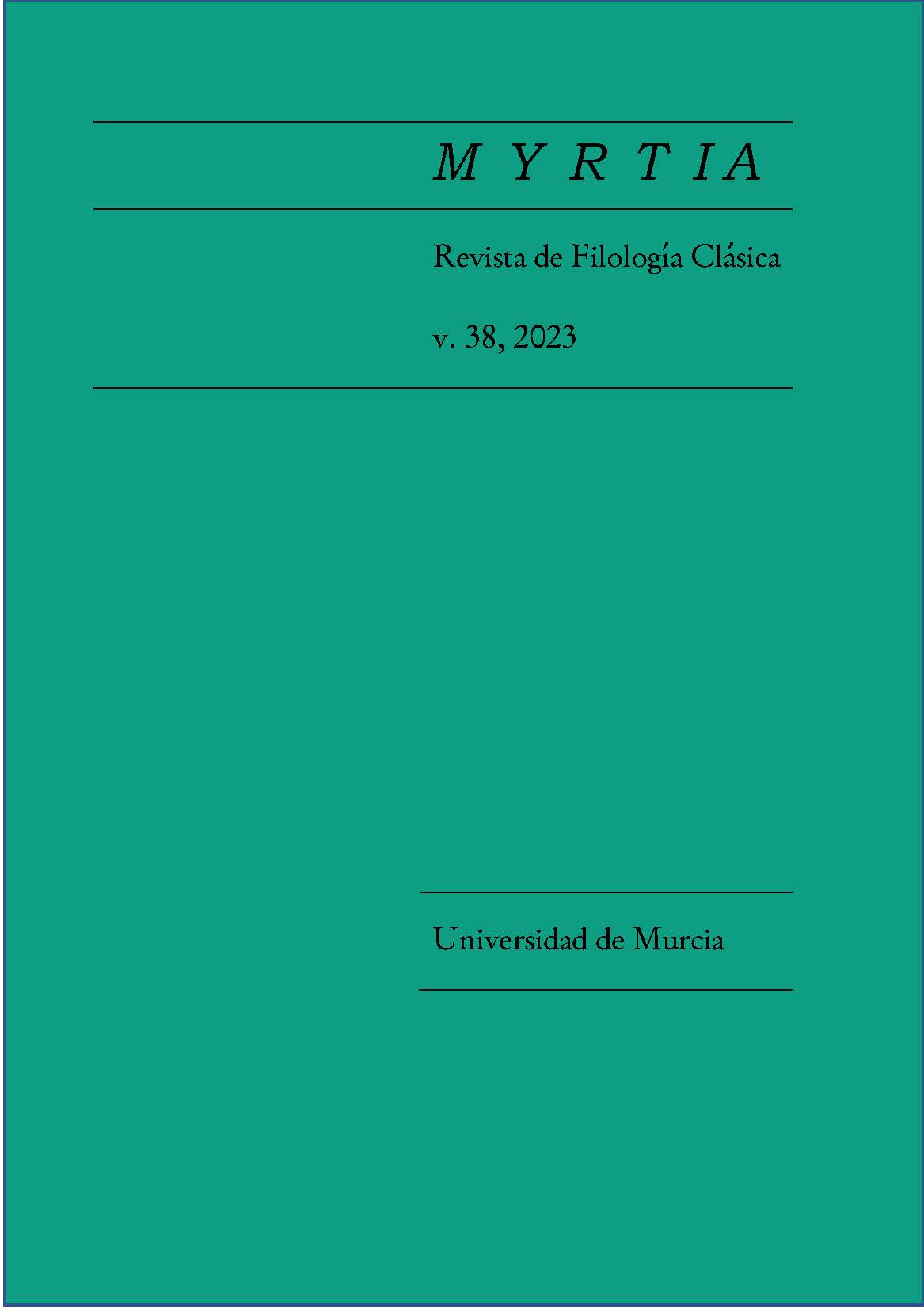What is a classic?
Two ghostly hapax in Ennodius (dict. 9 and epist. 9.34)
Abstract
Two examples of classicus with the meaning of ‘student’ (dict. 9 = 85 Vogel) and one example of classicum with the meaning of ‘social class’ (epist. 9.34 = 463 Vogel) have been recognised in Ennodius’ work. In fact, in the three cases it is a masculine noun, classicus, to be interpreted as ‘member of the high social class’ in a manner consistent with the socio-political use of the term as witnessed in a famous passage by Aulus Gellius (6.13).
Downloads
-
Abstract762
-
pdf (Español (España))391
References
M. Citroni, 2007, “Gellio, 19, 8, 15 e la storia di classicus”, MD 58, pp. 181-205.
J.N. Funck, 1750, De inerti ac decrepita Latinae linguae senectute commentarius, Lemgo.
R. Häussler, 1991, “Il classico: l’autore classico e la classicità”, Vichiana Ser. 3, 2, pp. 144-161.
S.A.H. Kennell, 2000, Magnus Felix Ennodius: a Gentleman of the Church, Ann Arbor.
S. Léglise (ed.), 1906, Oeuvres complètes de Saint Ennodius, vol. 1, Lettres, Paris.
A. López Kindler (ed.), 2002, Ennodio, Obra miscelánea; Declamaciones, Madrid.
A. López Kindler (ed.), 2012, Ennodio, Poemas; Epístolas, Madrid.
S. Gioanni, 2001, “Fonctions culturelles, sociales et politiques de l’amicitia épistolaire dans la Correspondance d’Ennode de Pavie jusqu’à la fin de l’année 503”, Lalies 21, pp. 165-181.
F. Magani, 1886, Ennodio, 3 voll., Pavia.
G. Marconi, 2013, Ennodio e la nobiltà gallo-romana nell’Italia ostrogota, Spoleto.
G. Marconi (ed.), 2022, Ennodio. Discorsi Scolastici ed esercizi retorici, Roma.
Ch. Pietri, L. Pietri (ed.), 1999-2000, Prosopographie chrétienne du Bas-Empire. 2. Prosopographie de l’Italie chrétienne (313-604), 2 voll., Roma.
PLRE = J.R. Martindale, 1980, The Prosopography of the Later Roman Empire, vol. 2, Cambridge.
A. Rimoldi (ed.), 1964, Bibliotheca Sanctorum, vol. 5, Roma.
A. Rimoldi (ed.), 1967, Bibliotheca Sanctorum, vol. 8, Roma.
F. Savio, 1913, Gli antichi vescovi d’Italia dalle origini al 1300 descritti per regioni. La Lombardia, parte I: Milano, Firenze.
B.J. Schröder, 2007, Bildung und Briefe im 6. Jahrhundert: Studien zum Mailänder Diakon Magnus Felix Ennodius, Berlin-New York.
ThLL = Thesaurus linguae Latinae, Leipzig-Berlin.
J. Uría Varela, 1998, “Classicus adsiduusque scriptor (Gell. XIX 8.15)”, EClás 113, pp. 47-58.
C. Urlacher-Becht, 2022, “La recherche sur Ennode (2004-2021): bilan et perspectives”, PhilolAnt 15, pp. 119-152.
F. Vogel (ed.), 1885, Magni Felicis Ennodi opera, Berlin.
V. Zarini, 2009, “Ennode et Arator: une relation pédagogique et son intérêt littéraire”, en Manifestes littéraires dans la latinité tardive: poétique et rhétorique. Actes du colloque international de Paris, 23-24 mars 2007, P. Galand-Hallyn, V. Zarini (ed.), Paris, pp. 325-342.
Las obras que se publican en esta revista están sujetas a los siguientes términos:
1. El Servicio de Publicaciones de la Universidad de Murcia (la editorial) conserva los derechos patrimoniales (copyright) de las obras publicadas, y favorece y permite la reutilización de las mismas bajo la licencia de uso indicada en el punto 2.
2. Las obras se publican en la edición electrónica de la revista bajo una licencia Creative Commons Reconocimiento-NoComercial-SinObraDerivada 3.0 España (texto legal). Se pueden copiar, usar, difundir, transmitir y exponer públicamente, siempre que: i) se cite la autoría y la fuente original de su publicación (revista, editorial y URL de la obra); ii) no se usen para fines comerciales; iii) se mencione la existencia y especificaciones de esta licencia de uso.
3. Condiciones de auto-archivo. Se permite y se anima a los autores a difundir electrónicamente las versiones pre-print (versión antes de ser evaluada) y/o post-print (versión evaluada y aceptada para su publicación) de sus obras antes de su publicación, ya que favorece su circulación y difusión más temprana y con ello un posible aumento en su citación y alcance entre la comunidad académica. Color RoMEO: verde.





